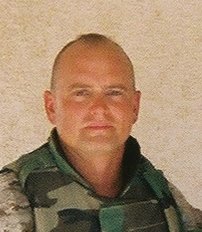The Strategy
The President’s new strategy for Iraq addresses at least 10 aspects of the fight in Iraq that can lead to victory: the rules of engagement, confronting external antagonists, working with positive neighbors, our military’s support, eliminating all militias, training Iraqi Security Forces, focusing on trouble spots, benchmarks for progress, a sense of urgency, and force to space ratios. It is far more than just throwing more troops at a problem as its critics would have us believe. It’s a comprehensive plan for victory that addresses the challenges we face in Iraq.
First it changes the rules of engagement in Iraq. Our troops have been asking for such a change for some time. Stopping combat operations to seek permission to act from higher headquarters, not being permitted into areas the enemy has fled, and exempting others from justice have hindered the efforts of both our troops and the Iraqi Security Forces. The Iraqi Prime Minister has agreed and is already supporting the change.
The new strategy addresses the turmoil created by Iran. The President has finally, publicly told them to stop meddling in Iraq. Over the last week we’ve now seen arrests of several Iranian agents with ties to terror groups in Iraq and an increasing naval presence in the region. Eliminating the Iranian influence will bring increased safety to our own troops and aid in quelling the sectarian violence.
The President proposed the engagement of Iraq’s neighbors and others in the region, except for Iran and Syria, in assisting with the development of Iraq. Many countries have a stake in a strong and stable Iraq. Turkey, Saudi Arabia and Jordan have particular interests in a stable neighbor and in Iraq’s ability to deny Iran the power it seeks in the region.
The President pointed out that those still fighting the Iraqi aspect of the war on terror still believe it is a fight we can win. The input of many high level military officials was sought during the development of the new strategy. They seek victory. Additionally, we continue to see reenlistments at record rates by those fighting this war. I know they wouldn’t do so if they thought their efforts were fruitless.
As with the change to the rules of engagement, the President has convinced Prime Minister al Maliki to address all militias in Iraq, not just the Sunni’s. If an end to the sectarian violence is to be reached, all antagonists must be dealt with. This includes Muqtada al Sadr whom he has told to become part of the solution or suffer as part of the problem.
The new strategy calls for acceleration in the training and development of Iraqi Security Forces. Increasing the training tempo will allow Iraq more and more autonomous security and eventually decrease the need for our troops in that arena.
It focuses troops where there’s violence. There are two major centers of violence in Iraq: Al Anbar Province and Baghdad. The fight in Al Anbar is still a fight against Al Qaeda and foreign fighters, either directly or by their stirring up Sunni’s into an insurgency. In and around Baghdad, sectarian violence has persisted because there have been neighborhoods where militias were free to hide and/or operate. We will confront those two troubled areas head on.
Our officials have been working with the Iraqi government to establish benchmarks for their government and the rest of the country. This gives them a direction for assumption of their own affairs and something by which to measure their progress and success.
Those benchmarks are part and parcel to their understanding of the urgency by which their actions need to be dictated. In his speech the President put them on notice that our patience and commitment was not open-ended or endless, and that their government must be willing to stand strong and address all problems. It was the first public proclamation that they need to get their own affairs in order and need to do it quickly.
Lastly, it provides the force to space ratios which have been needed for at least two years. The increase in troops allows us to address the two main trouble areas in Iraq and gives specifics for their mission there. The increase in Marines will allow us to capitalize on the success we’re having against the threat of Al Qaeda in Al Anbar. Over the last few months Al Anbar’s tribal leaders have been fighting with us against Al Qaeda. Reinforcing that momentum and success is warranted. The increase in U.S. and Iraqi soldiers to the Baghdad area, along with the change to the rules of engagement, will allow us to implement the plan for bringing sectarian violence under control in all neighborhoods.
But the success of this plan now depends on us as much as it does the ability of our Armed Forces to implement it and the Iraqi’s to act upon it. Will we let the defeatists like Chuck Hagel and John Murtha convince us to cower with our tails between our legs, run home, and hope against hope for exemption from the consequences of doing so? Or will we support our troops to victory and bring greater insurance of security for our country by being a bold, victorious world leader?
The President’s new strategy for Iraq addresses at least 10 aspects of the fight in Iraq that can lead to victory: the rules of engagement, confronting external antagonists, working with positive neighbors, our military’s support, eliminating all militias, training Iraqi Security Forces, focusing on trouble spots, benchmarks for progress, a sense of urgency, and force to space ratios. It is far more than just throwing more troops at a problem as its critics would have us believe. It’s a comprehensive plan for victory that addresses the challenges we face in Iraq.
First it changes the rules of engagement in Iraq. Our troops have been asking for such a change for some time. Stopping combat operations to seek permission to act from higher headquarters, not being permitted into areas the enemy has fled, and exempting others from justice have hindered the efforts of both our troops and the Iraqi Security Forces. The Iraqi Prime Minister has agreed and is already supporting the change.
The new strategy addresses the turmoil created by Iran. The President has finally, publicly told them to stop meddling in Iraq. Over the last week we’ve now seen arrests of several Iranian agents with ties to terror groups in Iraq and an increasing naval presence in the region. Eliminating the Iranian influence will bring increased safety to our own troops and aid in quelling the sectarian violence.
The President proposed the engagement of Iraq’s neighbors and others in the region, except for Iran and Syria, in assisting with the development of Iraq. Many countries have a stake in a strong and stable Iraq. Turkey, Saudi Arabia and Jordan have particular interests in a stable neighbor and in Iraq’s ability to deny Iran the power it seeks in the region.
The President pointed out that those still fighting the Iraqi aspect of the war on terror still believe it is a fight we can win. The input of many high level military officials was sought during the development of the new strategy. They seek victory. Additionally, we continue to see reenlistments at record rates by those fighting this war. I know they wouldn’t do so if they thought their efforts were fruitless.
As with the change to the rules of engagement, the President has convinced Prime Minister al Maliki to address all militias in Iraq, not just the Sunni’s. If an end to the sectarian violence is to be reached, all antagonists must be dealt with. This includes Muqtada al Sadr whom he has told to become part of the solution or suffer as part of the problem.
The new strategy calls for acceleration in the training and development of Iraqi Security Forces. Increasing the training tempo will allow Iraq more and more autonomous security and eventually decrease the need for our troops in that arena.
It focuses troops where there’s violence. There are two major centers of violence in Iraq: Al Anbar Province and Baghdad. The fight in Al Anbar is still a fight against Al Qaeda and foreign fighters, either directly or by their stirring up Sunni’s into an insurgency. In and around Baghdad, sectarian violence has persisted because there have been neighborhoods where militias were free to hide and/or operate. We will confront those two troubled areas head on.
Our officials have been working with the Iraqi government to establish benchmarks for their government and the rest of the country. This gives them a direction for assumption of their own affairs and something by which to measure their progress and success.
Those benchmarks are part and parcel to their understanding of the urgency by which their actions need to be dictated. In his speech the President put them on notice that our patience and commitment was not open-ended or endless, and that their government must be willing to stand strong and address all problems. It was the first public proclamation that they need to get their own affairs in order and need to do it quickly.
Lastly, it provides the force to space ratios which have been needed for at least two years. The increase in troops allows us to address the two main trouble areas in Iraq and gives specifics for their mission there. The increase in Marines will allow us to capitalize on the success we’re having against the threat of Al Qaeda in Al Anbar. Over the last few months Al Anbar’s tribal leaders have been fighting with us against Al Qaeda. Reinforcing that momentum and success is warranted. The increase in U.S. and Iraqi soldiers to the Baghdad area, along with the change to the rules of engagement, will allow us to implement the plan for bringing sectarian violence under control in all neighborhoods.
But the success of this plan now depends on us as much as it does the ability of our Armed Forces to implement it and the Iraqi’s to act upon it. Will we let the defeatists like Chuck Hagel and John Murtha convince us to cower with our tails between our legs, run home, and hope against hope for exemption from the consequences of doing so? Or will we support our troops to victory and bring greater insurance of security for our country by being a bold, victorious world leader?





No comments:
Post a Comment